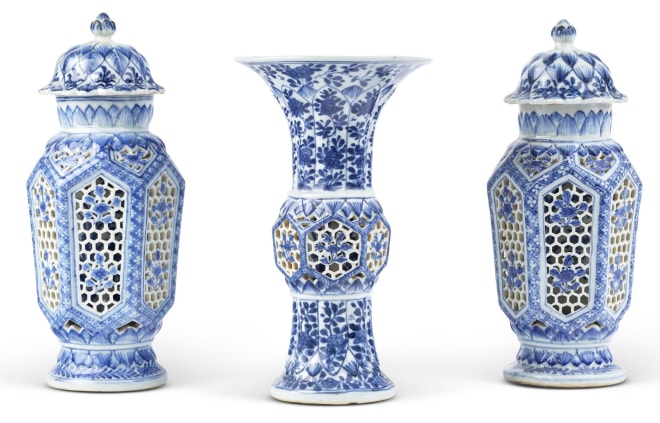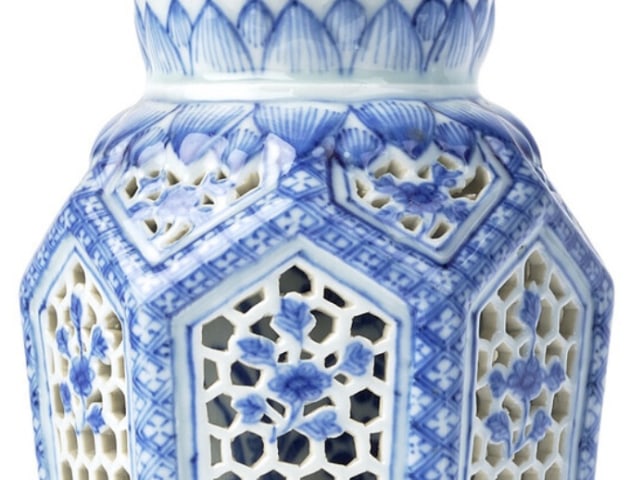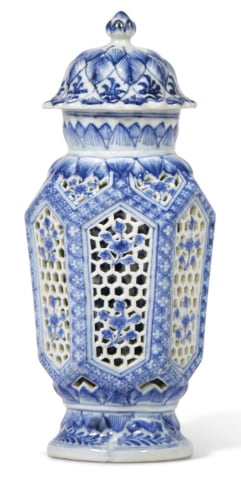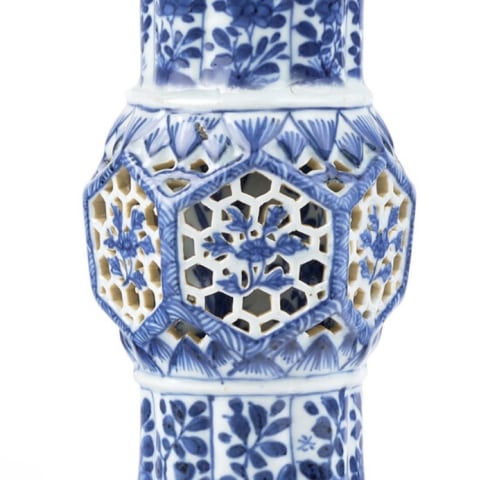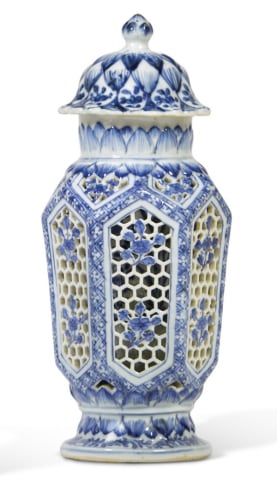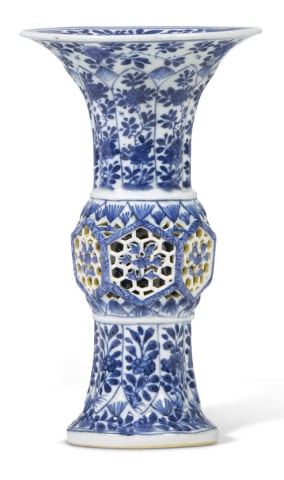BH73
Further images
Literature
Reticulated porcelain, is characterised by intricate cuts creating a pierced pattern. Père Francois Xavier d`Entrecolles (1664-1741) used the term reticulated in the 18th century to describe porcelain that had the appearance of a net. An alternative term for this type of porcelain is 'Devils Work', or Guigong. The Chinese term 'Linglong' is also used, which refers to something that is exquisite and elegant.
The Kangxi period was known as the 'age of innovation'. Reticulated decoration was combined with other innovations of the era. Examples of double-walled reticulated porcelain from this time, such as double-walled reticulated bowls and teapots are known but vases are more rare. A rare double-walled reticulated hookah base was held at Schloss Trachenberg, Silesia.
Openwork patterns can be found as early as the Shang Dynasty, where it appears on bronze wares, which are in some instances double-walled, with a closed inner and pierced outer wall.
In porcelain The National Palace Museum, Taipei, holds three related reticulated vases. The ceramic vessels have pierced walls, and an inner closed hull so they could be used. These were made by the official (guan) kilns of Laohudong in the Song dynasty (960-1279), see, (Du Zhengxian, ed., Hangzhou Laohudong yaozhi ciqi jingxuan [Selection of porcelains from the Laohudong kiln sites in Hangzhou], Beijing, 2002, pls 24 and 25).
In the Ming we find double-walled work in favour on fahua ware see one illustrated in: Idemitsu Bijutsukan zhin zuroku. Chugoku toji / Chinese Ceramics in the Idemitsu Collection, Vol. 3, Tokyo, 1987, no. 683.
This innovation and technical sophistication continued into the Qing period, in the Kangxi period with objects like our vases and then incredibly intricate Imperial vases were made for the Qianlong Emperor presenting the imperial kilns with their greatest ever challenge.
